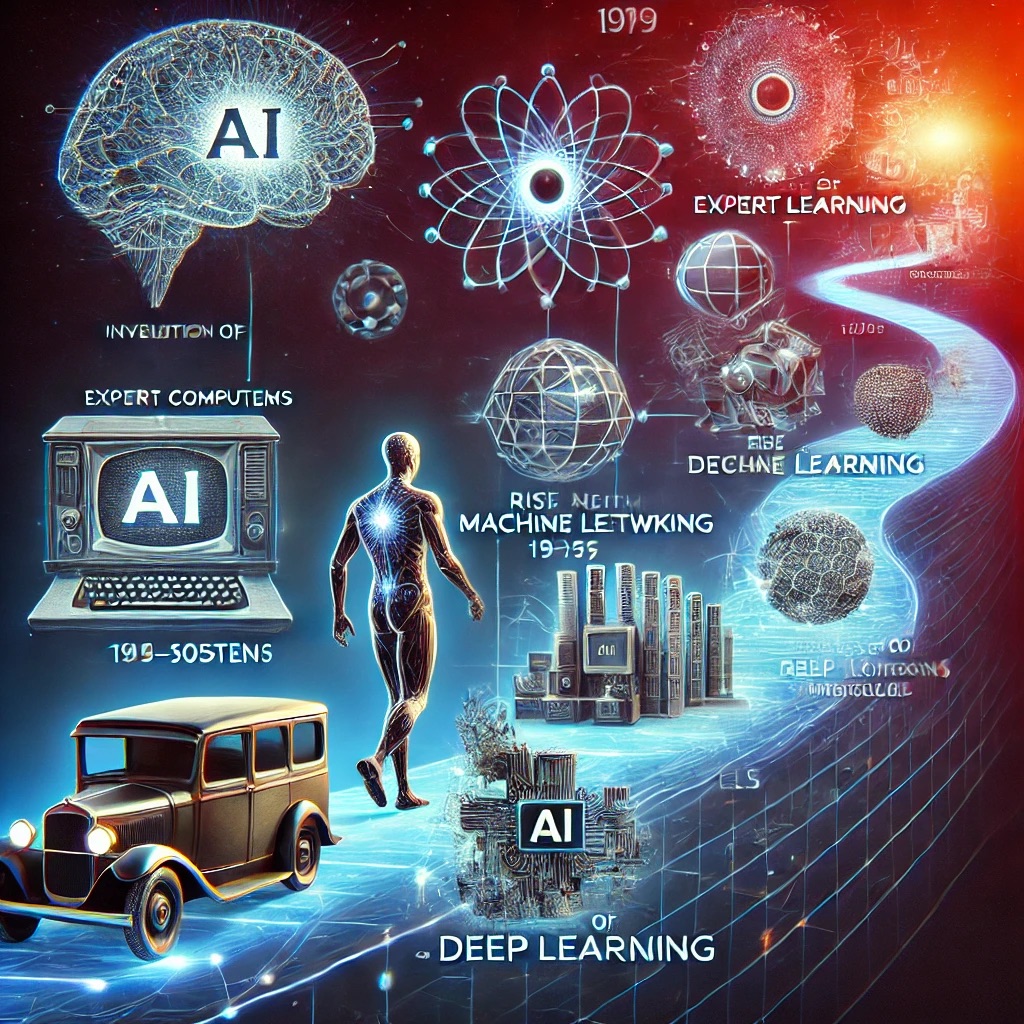Artificial Intelligence (AI) has gone from a science-fiction fantasy to an everyday necessity in record time. If it feels like AI is evolving at warp speed, that’s because it is. We’re living in an era where AI-powered assistants manage our schedules, smart homes anticipate our needs, and machines generate creative works that once seemed uniquely human. But how did we get here?
The journey of AI is a fascinating mix of breakthroughs, setbacks, and unexpected twists. In this post, we’ll explore the history of AI, from its earliest concepts to the deep learning models driving today’s most powerful systems.
The Birth of AI: From Theory to Reality
The idea of artificial intelligence stretches back centuries. Ancient myths and early automata, such as the mechanical devices built by Greek inventors, reflected humanity’s desire to create artificial beings. However, AI as we know it didn’t begin until the 20th century.
In 1950, British mathematician and computer scientist Alan Turing posed a groundbreaking question: Can machines think? His famous Turing Test proposed that if a machine could hold a conversation indistinguishable from a human, it could be considered intelligent. This idea set the stage for decades of AI research.
By 1956, the term artificial intelligence was officially coined at the Dartmouth Conference, where pioneers like John McCarthy, Marvin Minsky, and Claude Shannon laid out the first ambitious goals for AI. Their vision? Machines that could learn, reason, and solve complex problems—just like humans.
The AI Boom and Bust Cycles
With high hopes and strong funding in the 1960s and ‘70s, researchers set out to build computers that could understand language, recognize objects, and even exhibit reasoning. Early programs, like ELIZA (one of the first chatbots), could mimic human conversation in a limited way. But AI had serious limitations—computers simply weren’t powerful enough to handle the complexity of human cognition.
This led to what became known as AI winters—periods where optimism faded, funding dried up, and progress stalled. The first major AI winter hit in the 1970s, as researchers struggled to make AI systems practical beyond simple experiments.
But then, in the 1980s, AI experienced a revival with expert systems—programs designed to simulate human decision-making in specialized fields like medicine and finance. These systems were rule-based, meaning they relied on large sets of “if-then” statements to operate. However, they lacked the ability to adapt and learn from experience, leading to another slowdown in progress by the early 1990s.
The Rise of Machine Learning
A major breakthrough came in the 2000s with the rise of machine learning—a new approach where AI systems learned from data instead of being explicitly programmed. Rather than relying on rigid rules, machine learning algorithms could identify patterns and make predictions based on experience.
For example, early recommendation systems like those used by Netflix and Amazon relied on machine learning to suggest content based on user preferences. This was a game-changer—AI was no longer just a theoretical pursuit; it was becoming an essential part of everyday life.
Then came the biggest leap yet: deep learning.
Deep Learning and the AI Explosion
In 2012, a deep learning breakthrough shocked the AI community. A team at the University of Toronto, led by Geoffrey Hinton, used neural networks to achieve record-breaking accuracy in image recognition. Their algorithm, called AlexNet, was trained on massive datasets and could identify objects in images with unprecedented precision.
This marked the beginning of the deep learning revolution—a new era of AI where machines could understand speech, generate human-like text, and even create realistic images. Suddenly, AI could translate languages in real time (Google Translate), respond to voice commands (Siri and Alexa), and drive cars (Tesla’s Autopilot).
Deep learning fueled the rise of generative AI, leading to tools like ChatGPT, Midjourney, and DALL·E, which can generate human-like writing, realistic images, and even code. These models don’t just store information—they analyze vast amounts of data and create new content based on patterns they learn.
Where We Are Today: The AI Renaissance
Fast forward to today, and AI is everywhere. Chatbots can draft emails, virtual assistants manage our smart homes, and AI-powered tools are transforming industries from healthcare to finance. AI isn’t just a tool—it’s a force multiplier, amplifying human productivity and creativity like never before.
Tech giants like OpenAI, Google, and Meta are in an arms race to build the most powerful AI models, while startups are finding new ways to integrate AI into daily life. The line between human and machine-generated content is blurring, raising profound questions about authenticity, creativity, and the future of work.
What’s Next?
As AI continues its rapid evolution, we stand on the brink of even more profound changes. Some experts predict the rise of Artificial General Intelligence (AGI)—machines capable of reasoning, learning, and performing any intellectual task a human can do. Others believe AI will remain a highly specialized tool, assisting humans rather than replacing them.
What’s certain is that AI will only grow more sophisticated, and understanding its origins helps us prepare for its future.
In the next post, we’ll explore how AI is reshaping our homes, making them smarter, more efficient, and more intuitive. Stay tuned!
Key Takeaways
✅ AI has evolved through cycles of breakthroughs and setbacks, from early rule-based systems to modern deep learning.
✅ Machine learning and neural networks have driven AI’s rapid progress in recent years.
✅ AI is now embedded in everyday life, from chatbots to self-driving cars.
✅ The future of AI is uncertain, but its impact will be transformative across industries.
